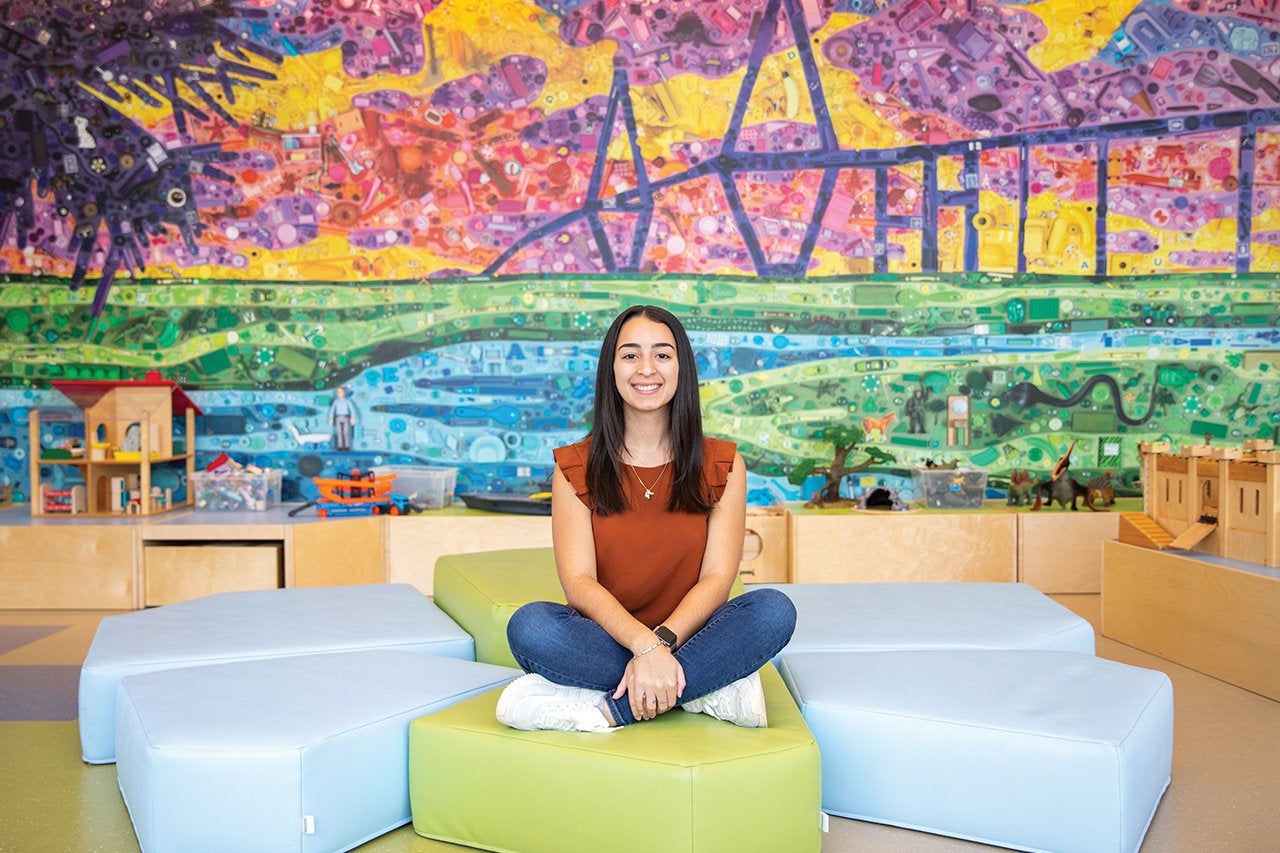Melanie Orama always knew she wanted a career working with children. She just wasn’t sure exactly what she wanted to do until she accompanied her best friend, who was diagnosed with leukemia, on a hospital visit in 2019.
“I went with him for his blood checkup and met a child life specialist,” she says. “She walked him through the process and served as his advocate. I decided then and there to change my major.”
While an undergrad at the University of Florida, Orama participated in a practicum at the Shands Children’s Hospital, where she spent time shadowing and learning. She wanted to make sure she could handle the emotionally challenging environment and assist children and families without needing support herself.
Assured the work suited her well, Orama set about finding the right graduate program and hit upon the Master of Science in Child Life at the Graduate School, University of Charleston, South Carolina.
“There are not a lot of in-person programs, and there are very few that are so specific,” says Orama. “The CofC program is built for success because students have guaranteed experiences through an integrated practicum with the Medical University of South Carolina and partnerships with nonprofits.”

Orama gained an added experience thanks to a study-abroad award from the School of Humanities and Social Sciences Dean’s Excellence Fund, an unrestricted discretionary fund that enables the dean to provide support to many areas within the school. With the award, Orama traveled to Italy to participate in a practicum designed by Susan Simonian, director of the Master of Science in Child Life program and professor of psychology.
Simonian learned Italian to forge a relationship with Meyer Pediatric Hospital, one of the largest children’s hospitals in Western Europe. The hospital and she developed a program for students to meet with the pediatric psychology team and learn cultural approaches to psychosocial care.
“I realized that child life students needed an opportunity to embrace diversity, assess biases and develop a rapport with children and families without speaking the same language,” she says, adding that students also developed normative play programming to learn how to involve children in play without a common language.
“In Italy, I couldn’t communicate, so I really needed to learn body language and modeling without words,” says Orama, a first-generation American who is bilingual in Spanish and English. “It really opened my eyes to how to communicate nonverbally.”
Next up is a required 600-hour internship, which she’ll do at Nicklaus Children’s Hospital in her hometown of Miami. She’s excited to work in a culturally diverse community where she can apply what she learned at CofC, at MUSC and in Italy.
“No matter the language or culture, I want to share details about procedural preparations like IVs and MRIs and to explain the ‘whys’ so that children and their families can overcome misperceptions,” she says. “I look forward to empowering families to advocate for themselves – to ask questions.”
She’ll still have to pass the Child Life Professional Certification exam, but when Orama graduates in the spring, she will have achieved Simonian’s goal of having her students leave the program confident and competent.
Featured image by Catie Cleveland




